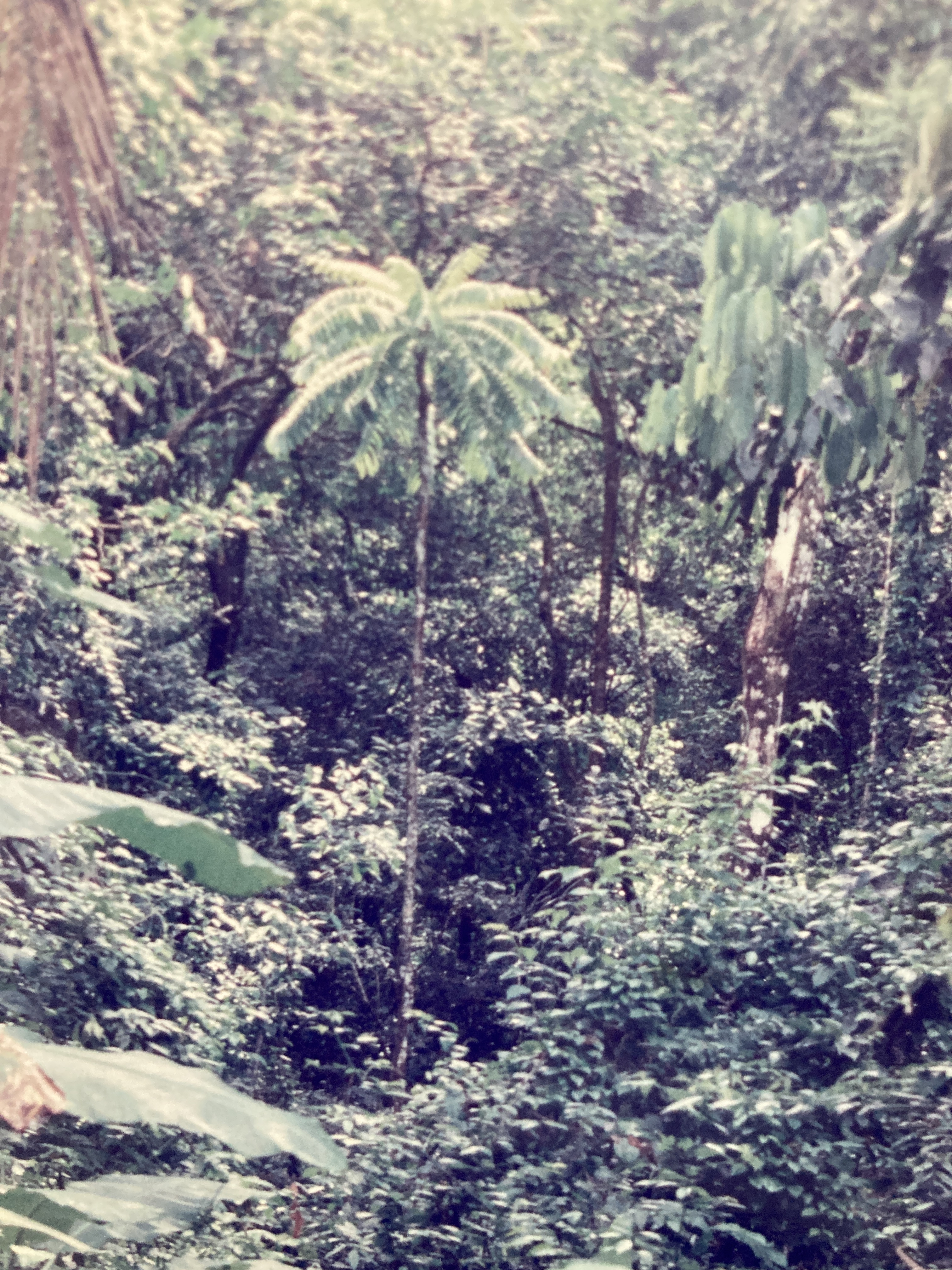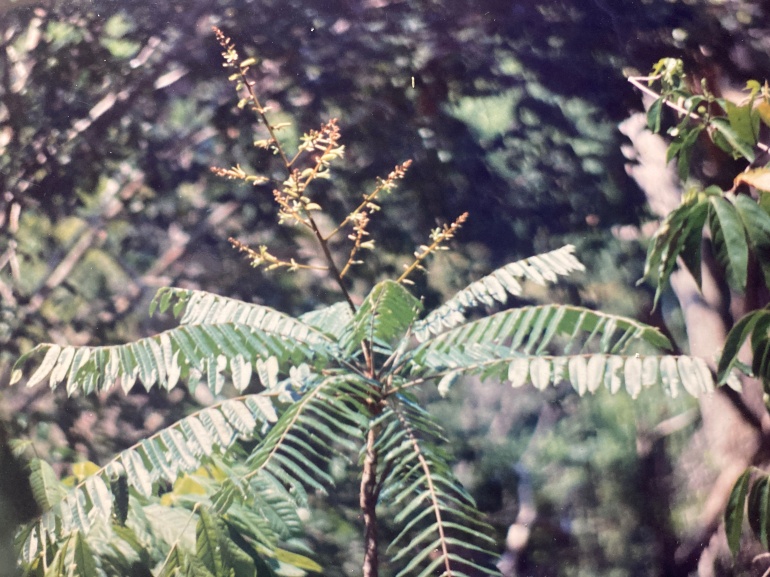Simaroubaceae CEDRON
Tree: A common evergreen understory or subcanopy evergreen tree measuring anywhere from 4 to 20 meters in height. Cedron is easily recognizable for its thin, branchless trunk and thick, umbrella-like crown of long, compound leaves.

Description: Cedron has a mostly cylindrical, straight trunk of slight girth (generally less than 20 cm but occasionally exceeding 30cm in diameter). Taller trees are remarkable for their long, slender, slowly tapering monopodial boles. Though branchless, the single trunk may occasionally subdivide into several secondary trunks. Cedron bark is smooth, gray, and generally covered with lichens of different pastel colors (e.g. white, pink, green). Leaves are compound, imparipinnate, alternate, and very large – sometimes reaching up to a meter in length. Composed of 31 or so oblong leaflets (15 cm by 5 cm), they are a dark, glossy green color. The outstretched leaves are densely clustered at the very top of the tree where they create a characteristic and unmistakable, umbrella-like tree form. Foliage is completely shed in October and new leaves – red and supple – emerge in November and December. During this process, the rapidly growing leaf petioles extend vertically upwards as a group and then open outwards – unfolding as an upside-down umbrella. Flowers are borne on large (60 cm), terminal panicles that emerge from the center of the leaf whorl at the apex of the tree. They are pale green, 2.5 cm long, and sport a set of five tomentose, narrow petals that surround a tube formed from the fused filaments of the various stamens. A small, cup-shaped calyx and hidden, centrally located pistil are the blossoms other major features. Flowers are observed from March through June, though individual plants may only be fertile for a fraction of this time. Fruits are large (7 cm by 4.5 cm), peach-like drupes with a mottled olive-green and maroon, velvety outer skin and a thin layer of orange flesh covering a single large (6 cm), white pit. A typical tree may produce five or so fruits annually, and these become so heavy that they bend the long stalk to which they are attached and end up dangling vertically from it. Ripe fruits are observed from late June through August. Seeds germinate in the wet, rainy-season soil within one month of fruition.

Similar Species: In Manuel Antonio, only Talisia nervosa possesses a similar growth form to the subject of this description. This former species is much smaller, and its crown of compound leaves is much less dense than is Cedron’s, so the two trees should be readily distinguishable.
Natural History: Annually, and just before the dry season, Cedron trees completely shed their old leaves and then replenish them immediately thereafter. Flowers are pollinated by bees and other insects and fruits are eaten and dispersed by large mammals (e.g. White-faced Monkeys). Cedron trunks, being thin and long, break with some frequency (thanks to the action of excessive winds or falling limbs from neighboring trees) but the species is an eager stump or trunk sprouter and it is capable of rapidly regenerating its crown and eventually its stature. Upon close inspection, many forest Cedron trees are seen to have passed through one or two such traumas during their lifetimes.
While frequently found in the forest, Cedron also tends to grow as a pioneer species, and it is often seen thriving in abandoned fields and pastures where it is exposed to day-long doses of direct sunlight. Even in the jungle, this species seems to prefer light-gaps and trailsides where larger amounts of insolation are available.

Uses: Cedron fruits are edible and good tasting. In his book on medicinal plants, Nuñez (1978) mentions Cedron as having been believed to contain substances useful in counteracting the effects of snake venom in the body. Specifically, he states that the cotyledons of the seeds were believed to contain some active chemical.
Distribution: In MANP, Cedron can be found in every wooded or regenerating habitat. The tree is known from all of south-western Costa Rica and it ranges from this country to Colombia.
